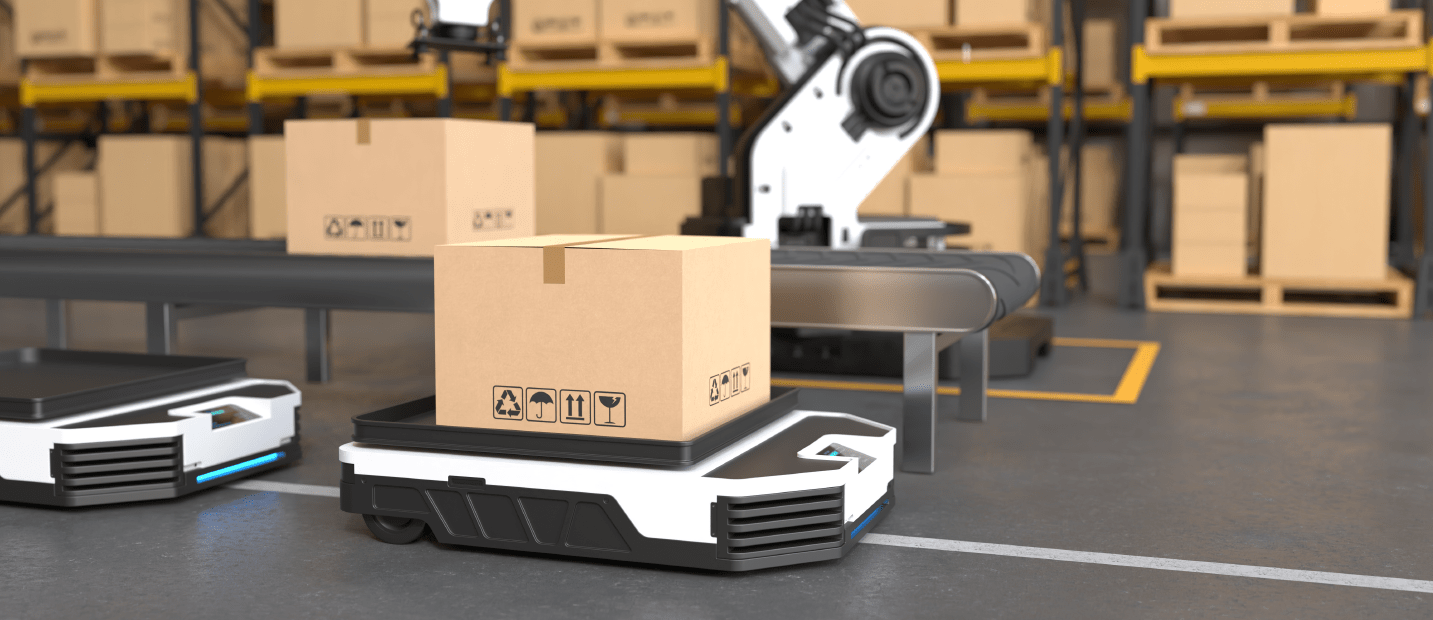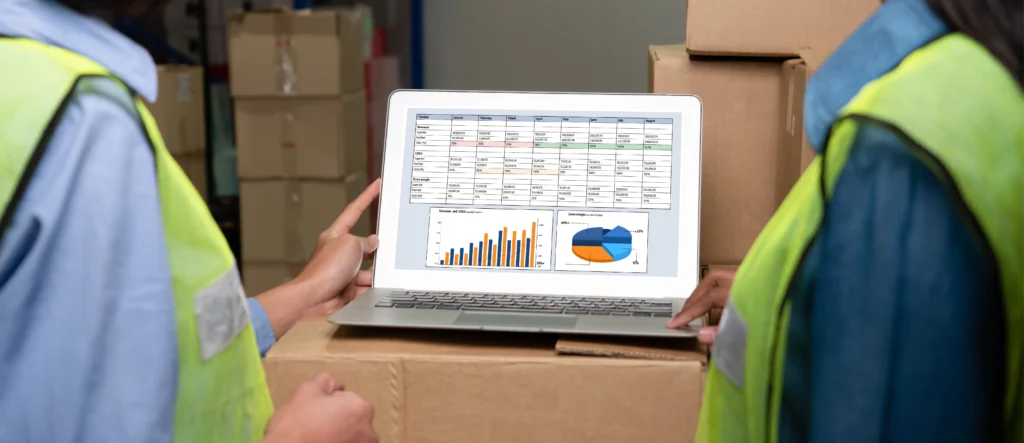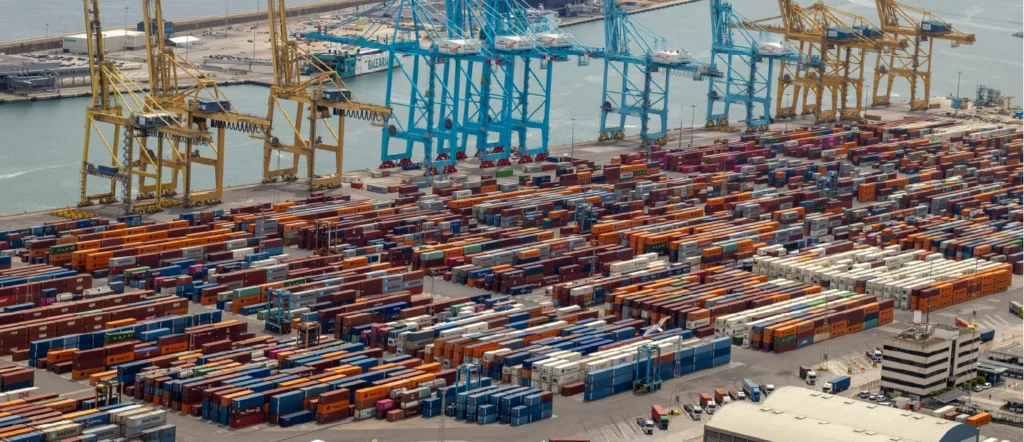Although the terms "intelligent warehouse" and "automated warehouse" are often used interchangeably, there are subtle but important differences between the two concepts:
Automated Warehouse
An automated warehouse is one that uses automated technology and machinery to perform specific tasks that would normally be done by a human, such as:
- Goods movement by means of mobile robots.
- Use of automatic conveying systems such as conveyors or cranes.
- Automated picking: robotic arms that pick and pack products.
The main objective of an automated warehouse is to reduce human intervention in repetitive tasks, improve efficiency and reduce errors. However, an automated warehouse does not necessarily have the ability to make complex decisions on its own.
2. Intelligent Warehouse
A smart warehouse, on the other hand, is a more advanced concept. In addition to having automated technologies, it integrates artificial intelligence (AI), Internet of Things (IoT) and data analytics to improve decision-making and overall warehouse efficiency. Key features of a smart warehouse include:
- Real-time optimization: Uses real-time data to adjust the operation according to demand, warehouse traffic or sales patterns.
- Predictive and adaptive: Uses AI algorithms to forecast demand, optimize inventory and better manage the flow of goods.
- Total interconnection: Systems are connected, allowing different equipment and machines to "talk" to each other, automatically adjusting operations to maximize productivity and minimize errors.
Key differences:
- Automation vs. Intelligence: While an automated warehouse focuses on performing tasks with automated machinery and systems, an intelligent warehouse learns and adapts to changing conditions based on advanced data and analytics.
- Decision making: An automated warehouse needs decisions to be programmed or controlled by operators, while the smart warehouse can make autonomous decisions based on data collected by sensors and predictive algorithms.
- Flexibility and scalability: Intelligent warehouses are more flexible and scalable, as they can quickly adapt to changes in operations, whereas an automated warehouse may require more manual adjustments to adapt to new needs.
Example:
- Automated: A system of robots that move pallets from point A to point B, following pre-programmed routes.
- Intelligent: A system that, in addition to moving pallets, analyzes demand in real time, decides which route is the fastest at that moment, prioritizes orders based on urgency, and automatically adjusts inventory based on buying patterns.
In conclusion, all intelligent warehouses are automated, but not all automated warehouses are intelligent. The key is the ability to analyze and make autonomous decisions that differentiates intelligent warehouses from merely automated ones.
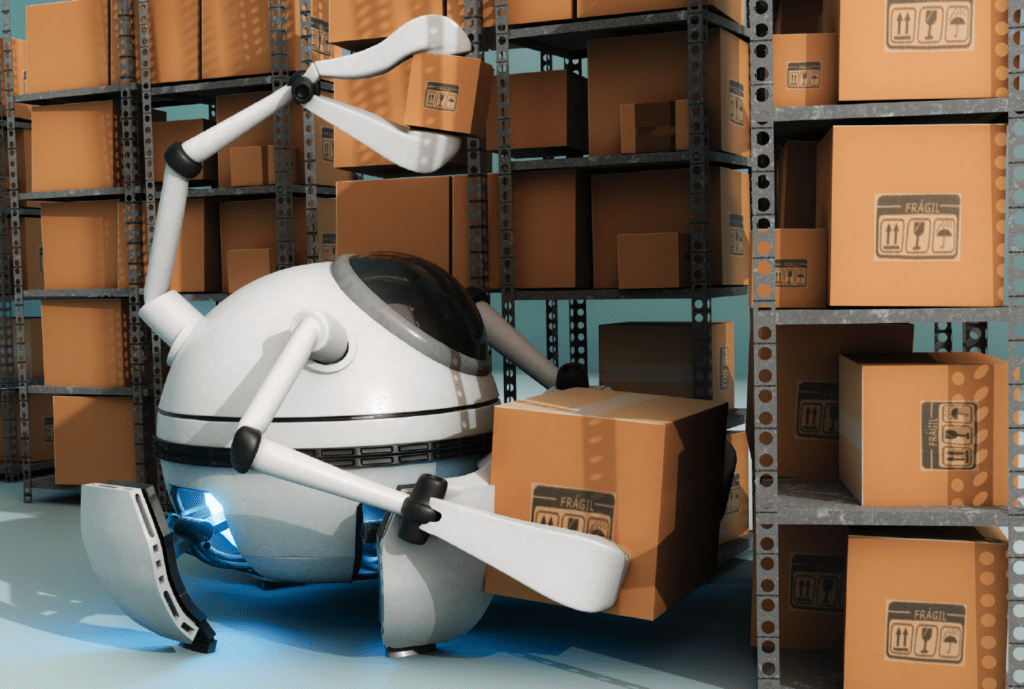
Now let's take a look at how certain technologies are making their way into warehouses. How do drones work for inventory organization?
Drones are revolutionizing warehouse inventory organization by providing a fast, accurate and efficient way to perform previously labor-intensive and time-consuming tasks. Here's how drones work in inventory management:
Warehouse mapping
Drones use advanced sensors and cameras to create a three-dimensional map of the warehouse. This initial mapping allows them to navigate through the space, avoiding obstacles such as shelving or machinery. In addition, the map helps determine where products are located and which routes are most efficient for flying and checking inventory.
2. Barcode or RFID reading
The drones are equipped with barcode scanners or RFID (Radio Frequency Identification) tag readers. As they fly through the shelves or aisles of the warehouse, they scan the codes on the stored products to verify which items are in stock and where they are located.
- RFID is particularly useful because it does not require direct line of sight, allowing drones to detect products in less accessible locations, such as in closed boxes or behind other objects.
Advanced sensors for positioning
To accurately navigate the warehouse, the drones use a combination of proximity sensors, high-resolution cameras, LIDAR (light detection and ranging) sensors and GPS. This allows them to fly through tight spaces and accurately track their position in real time.
- Optical and depth sensors help them detect the distance to shelves and other objects, avoiding collisions.
4. Real-time inventory analysis
As the drones scan the products, they send the information in real time to a centralized inventory management system. This system can instantly update the inventory status, detecting any discrepancies between the physical inventory and the inventory recorded in the system.
- The software can even identify misplaced or misplaced products and generate alerts to correct those errors.
5. Automatic counting and verification
Instead of sending teams of workers to manually check inventory, drones can do inventory counts autonomously. They fly from shelf to shelf, quickly scanning products, counting units on hand and verifying that they are properly stored according to the management system.
- This significantly reduces the time it takes to conduct complete inventories, as drones can work continuously and more accurately than humans.
6. Integration with management software
The drones are integrated with warehouse management systems (WMS), where the collected data is analyzed and compared with the digital inventory. This allows:
- Automatically update inventory, improving the accuracy of stock levels.
- Optimize replenishment, as the system can identify when a product is about to run out.
- Reduce human errors, since verifications are performed automatically and accurately.
7. Scheduled tasks
The drones can be programmed to perform routine tasks such as inventory audits at regular intervals, or they can be activated in case the system detects discrepancies in the inventory, performing checks without the need for human supervision.
8. Use in large warehouses or distribution centers
In large warehouses or distribution centers with high ceilings and extensive storage areas, drones are especially valuable because they can quickly access areas that would otherwise be complicated or dangerous for personnel. They can fly up to upper racking levels without the need for forklifts or ladders, which improves staff safety.
9. Benefits of using drones in inventories
- Time savings: Drones can perform inventory tasks in hours, which could take humans days.
- Increased accuracy: Automation reduces human error, providing more accurate and up-to-date inventories.
- Lower cost: In the long run, the use of drones reduces costs associated with labor and inventory errors.
- Safety: Reduces the need for employees to perform tasks at heights or in hard-to-reach areas, reducing the risk of accidents.
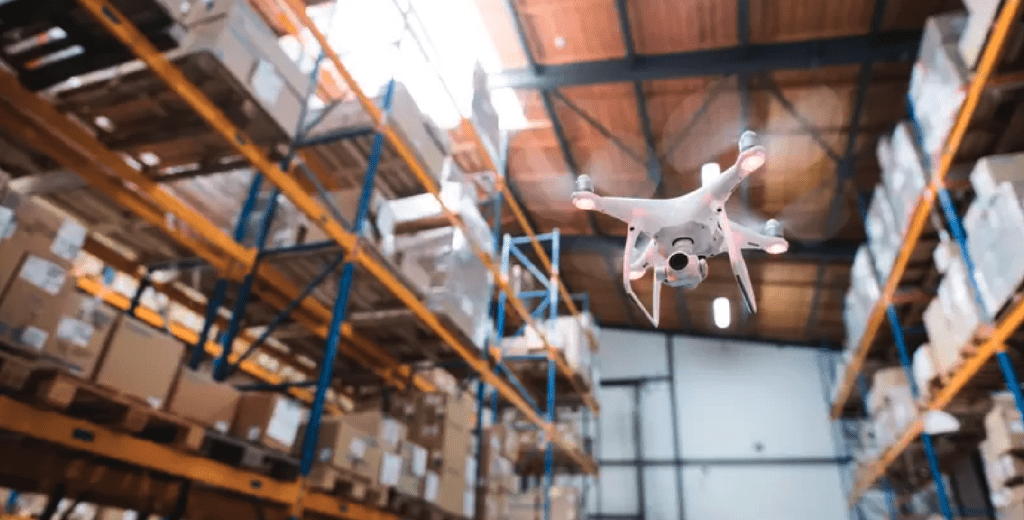
You might be interested in: https://youtu.be/7yeqAMGeFuM?feature=shared
What about robots - how are they used in warehouses for transporting and distributing products?
In modern warehouses, different types of robots designed specifically for the transport and distribution of products are used. These robots are equipped with advanced technology to improve efficiency and reduce human intervention. Here are the main types of robots used in warehouses:
| 1. Autonomous Mobile Robots (AMR) | AMRs are robots equipped with sensors, cameras and autonomous navigation software that allow them to move around the warehouse without the need for fixed infrastructure such as lines or predefined routes. They use technology such as LIDAR and real-time maps to avoid obstacles and optimize their path. | Function: They transport products or containers from one area to another within the warehouse, usually from picking stations to packing or shipping areas. Example: Kiva Robots (now Amazon Robotics) or Fetch Robotics robots. |
| 2. Automated Guided Vehicles (AGV) | Unlike AMRs, AGVs follow predefined routes using floor markings, magnetic strips or cables. They are simpler in operation, but still effective in moving goods from one point to another within warehouses and distribution centers. | Function: They are usually in charge of transporting heavy loads or pallets between different areas of the warehouse, such as between the receiving area and the storage racks. Example: Vecna Robotics and Dematic are companies that manufacture AGVs for warehouses. |
| 3. Picking robots (picking robots) | These robots are designed to pick products off the shelves and prepare them for shipment. They use advanced computer vision systems and robotic arms to accurately identify, grab and move products. | Function: They perform picking tasks, one of the most common and time-consuming tasks in warehouses. Picking robots often work together with mobile robots (AMR or AGV) that then transport the products. Example: Picking robots from RightHand Robotics and Plus One Robotics are popular examples. |
| 4. Collaborative Robots (Cobots) | Cobots are designed to work in direct collaboration with human employees. They are smaller, more flexible robots that assist workers with repetitive tasks, such as packaging, loading and unloading products, or picking orders. They are easy to program and safer to interact with people. | Function: They assist in tasks that require some precision or physical effort, but where human intervention is still necessary. Cobots are ideal for assembly, packaging or light picking tasks. Example: Universal Robots and Fanuc manufacture cobots that are already in use in warehouses. |
| 5. Automated Storage and Retrieval Systems (AS/RS)) | This type of system combines robots with automated shelving to efficiently store and retrieve products. AS/RSs typically have robotic arms or cranes that move vertically and horizontally on the shelves to access, store or retrieve products on demand. | Function: Manage item placement and retrieval in dense storage areas. Common in distribution centers with high product turnover or limited space. Example: Swisslog and Daifuku systems offer AS/RS solutions. |
| 6. Robotic palletizers/ depalletizers depalletizers | These robots are responsible for palletizing and depalletizing goods. Palletizing involves the orderly placement of boxes or products on pallets to facilitate their transport. Depalletizing is the reverse process, where boxes are unloaded from pallets. | Function: Instead of an operator manually placing boxes on pallets, these robots can do it quickly and efficiently. They are ideal for warehouses with high turnover operations. Example: ABB Robotics and KUKA Robotics manufacture specialized robots for these tasks. |
Benefits of these robots in warehouses
- Increased productivity: Robots can work 24 hours a day, increasing order processing capacity without the need for breaks.
- Error reduction: Robot precision minimizes errors in picking, storage and transport of products.
- Space optimization: Some robots, such as AS/RS systems, allow more products to be stored in less space due to their ability to work in high-density areas.
- Improved safety: Robots perform dangerous or repetitive tasks that could lead to worker injuries, improving safety in the warehouse.
Conclusion
By allowing products to be held in a customs-suspended state, the bonded warehouse facilitates more efficient supply chain scheduling. Automotive plants can synchronize the arrival of just-in-time inputs, reducing the need to maintain large inventories and minimizing the risk of production interruptions.
The different types of robots used in warehouses (AMR, AGV, picking robots, cobots, AS/RS systems, palletizers and drones) are transforming the logistics industry. These robots enable more efficient, safer and faster handling of products, helping to make operations more competitive in markets such as ecommerce, where speed and accuracy in deliveries are essential.
At ABC Logistics we evolve and prepare ourselves with technology and automated processes to add value to your business.
Subscribe to our newsletter to receive logistics and marketing news that maximize your business!

